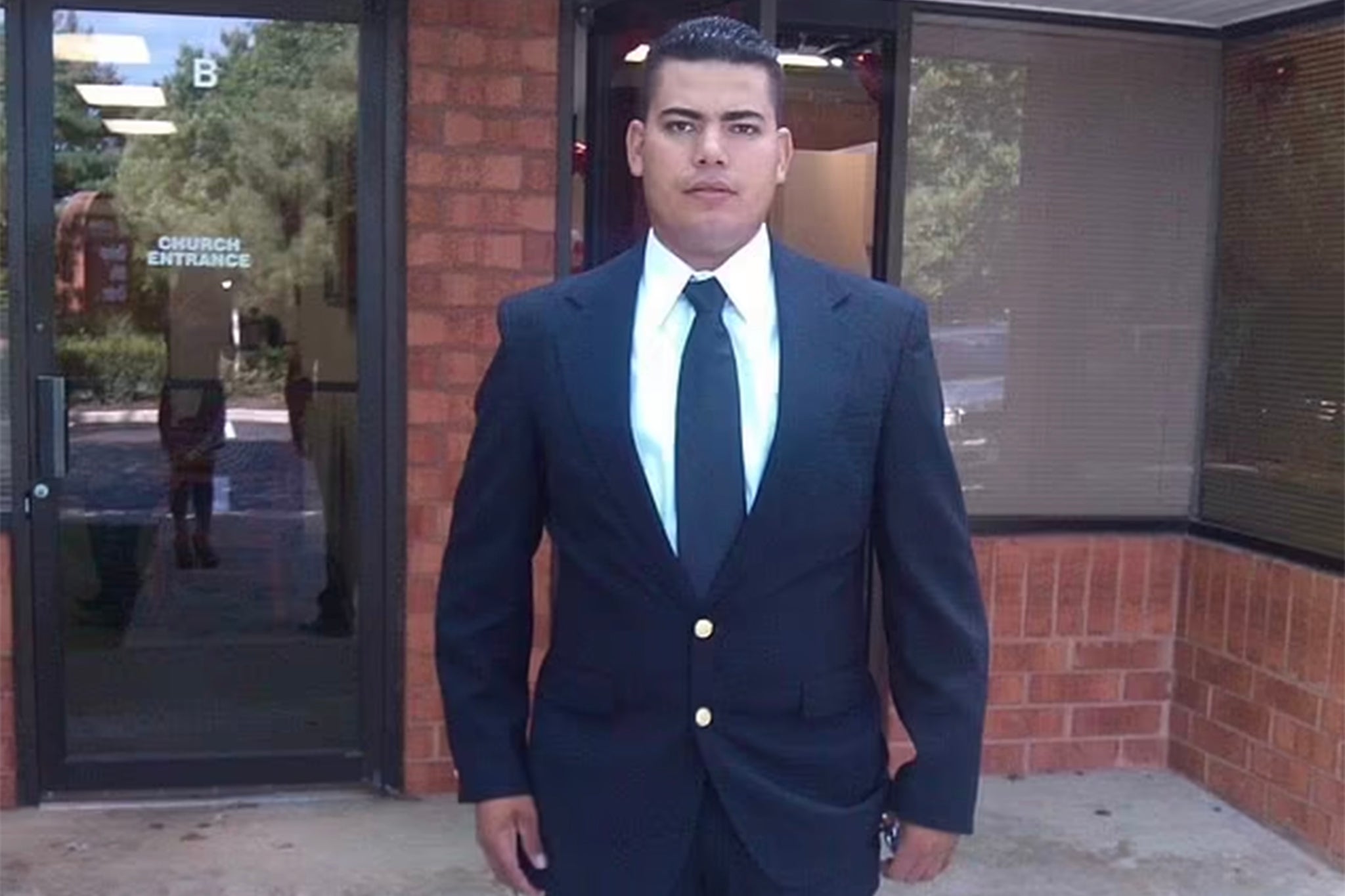Enormous cranes have started to arrive in Baltimore to help clear the wreckage after the collapse of the Francis Scott Key Bridge — an essential step before recovery efforts to find the missing construction workers continue, officials say.
A massive cleanup operation is now underway to clear the wreckage of the bridge from the river, with huge crane ships, and thousands of relief workers headed for Baltimore.
One of the cranes, the Chesapeake 1000, is capable of lifting 1,000 tonnes — but the bridge is estimated to weigh around three or four times that, so it will need to be cut into sections, Gov Moore said.
The wreckage needs to be cleared to help advance recovery efforts, after diving operations were suspended Wednesday night due to “security concerns,” as well as to reopen the channel and ultimately rebuild the bridge, the governor added.
Divers are waiting for “the first word” that conditions are safe and clear to examine beneath the wreckage and “recover any of these individuals that perished in this unfortunate incident,” Col Roland Butler of the Maryland State Police said.
To understand the scale the teams are working with, the governor said that the “freight” was roughly the size of the Eiffel Tower.
President Biden also announced he has approved $60m in initial aid to rebuild the bridge.
WATCH: Maryland governor says freight that hit Baltimore bridge was ‘nearly’ size of Eiffel Tower
The latest updates on the bridge collapse response
Maryland Gov Wes Moore laid out four directives:
1) Continue recovery efforts when it is safe.
The governor noted that because of current conditions, it is unsafe for divers to continue searching for the missing people, who have been presumed dead.
A team of divers is on standby, “waiting for the first word that it is safe and it is clear to go in and examine what’s beneath the wreckage and recover any of these individuals that perished in this unfortunate incident,” Col Roland Butler of the Maryland State Police said.
2) Clear the channel and open the vessel traffic to the port.
Four massive cranes are coming in to help lift the wreckage. Two have arrived, one arrives tonight and the fourth is arriving on Monday, Mr Moore said.
“One of the cranes is called the Chesapeake 1000 and it can lift about 1000 tonnes,” but the challenge is that the Key Bridge, which sits on top of the vessel right now, weighs somewhere between 3000 and 4000 tonnes, “so the bridge needs to be cut into sections, he explained.
“We need to clear the channel and open the vessel traffic to the port. Because the health of the Maryland economy and the national economy depend on it,” the governor added.
3) Taking care of those who have been affected by this crisis.
The governor urged legislators to pass a measure “to support the families and the victims of the bridge collapse, and everyone else who has been affected by this emergency.” Mr Moore also said he will “push for legislation that seeks to protect workers like the six victims of the Key Bridge collapse.”
He added that he will be proposing that a permanent state scholarship be created for the children of surviving spouses of workers who lost their lives in the disaster.
4) Rebuilding the bridge.
“We cannot rebuild the bridge until we have cleared the wreckage,” the governor clarified.
Echoing his previous warning, he said at the press conference that the operation will not take days, weeks, or months, and that there is a “long road” ahead.
Black box reveals final moments before the collision
Questions are now being asked about what exactly caused the fatal crash.
Now, some of those questions are being answered as the National Transportation Safety Board (NTSB) has retrieved the vessel’s voyage data recorder, or black box.
Data from the device has shed some light on the dark moments just before the ship slammed into the bridge.
At 12.39am, the Dali container ship departed from Baltimores’s Seagirt Marine Terminal.
Thirty minutes later, at 1.07am, the vessel entered Fort McHenry Channel.
Numerous alarms were recorded on the ship’s bridge audio at 1.24am. Around the same time, the voyage data recorder (VDR) stopped recording the vessel’s system data, but was able to continue taping audio from an alternative power source.
Two minutes later at 1.26am, the VDR resumed recording the Dali’s system data and captured steering commands and orders about its rudder.
That same minute, the pilot issued a very high frequency radio call to nearby tugboats requesting assistance for the stricken vessel. Data from the Maryland Transportation Authority (MDTA) showed that the pilot association dispatcher called the MDTA duty officer about a blackout.
At 1.27am, the pilot ordered the Dali to drop the port anchor, along with other steering commands. The pilot also issued another high frequency radio call, reporting that the ship had lost all power and was approaching the Francis Scott Key Bridge.
Read the full story…
WATCH: Baltimore to receive $60 million in federal funds to rebuild
Remembering the victims: Maynor Yassir Suazo Sandoval
Another of the workers missing and presumed dead since the bridge collapse in Baltimore has been named as Maynor Yassir Suazo Sandoval, according to Martin Suazo, his brother.
Martin, who lives in Honduras, told CNN that his family over in Baltimore called him to tell him that his brother was missing after the container ship crashed into the bridge.
He is originally from Azacualpa in Honduras and had been living in the United States for more than 18 years. He was married and had an 18-year-old son and a five-year-old daughter.
His brother told the outlet that Sandoval was an entrepreneur who had started his own maintenance company, venturing to the US “in search of a better life,” Martin told the outlet.
Martin said his family were holding onto hope that his brother could be found alive but now hope at least his body will be recovered so they can give him a proper funeral.
The Honduras Deputy Foreign Affairs Minister Antonio García also confirmed to The Associated Press that Sandoval was missing and that they had been in contact with Suazo’s family.

Maynor Suazo Sandoval
In an interview with Honduran newspaper La Prensa, Sandoval’s brother Martin Suazo said in Spanish, “What we’re living is inexplicable. We wish it wasn’t real. We’re dismayed, especially the agony of not knowing when they’re going to find the body.”
One of eight siblings, the construction worker was described by another one of his brothers, Carlos Suazo Sandoval, as a “joyful person who had a vision.”
“We still have faith until this moment, God grant the miracle, it would be beautiful,” Carlos told CNN en Español on Wednesday. “We still have hope, I know that time is our worst enemy.”
The Suazo family are now focusing on having Sandoval’s body found, and if they do, they plan to repatriate the body to Honduras, Carlos said.
The Honduran Embassy told Martin Suazo that it would work with him to bring his brother’s body back to the country for funeral arrangements.
WATCH: NTSB releases new video on board Dali ship after Baltimore bridge collapse
Debris recovery efforts are underway
The recovery mission have concluded, officials said, shifting their focus now onto cleaning up the debris.
At Thursday’s conference, Gov Moore promised that “the best minds in the world” were working on plans to clear the debris, move the cargo ship that rammed into the bridge from the channel, recover the bodies of the four remaining workers presumed dead and investigate what went wrong.
He told reporters: “I want to end by assuring the people of Maryland that this work is moving together at a full clip, and this work is moving forward together.”
The governor did not estimate how long the process will take, but warned, it will be a “very long road” to recovery.
Construction worker ‘miraculously’ survives Baltimore bridge collapse without knowing how to swim
A construction worker who was part of the team on the Francis Scott Key Bridge when it collapsed early on Tuesday morning in Baltimore, miraculously survived the incident despite not knowing how to swim.
Julio Cervantes’ and seven other workers from Mexico and Central America were taking a break inside their cars just moments before the bridge collapsed around 1:30am.
Mr Cervantes and another man were rescued the same day. The remains of Alejandro Hernandez Fuentes, 35, and Dorlian Ronial Castillo Cabrera, 26, were recovered by searchers.
He was taken to the hospital with a chest wound and was released the same day
“My husband doesn’t know how to swim. It is a miracle he survived,” the wife of Cervantes, who did not wish to reveal her name, told NBC.
Implications for global trade
In a speech on Tuesday afternoon, President Joe Biden vowed to use federal funds to rebuild the bridge and promised to “move heaven and earth” to reopen the bridge “as soon as humanly possible”, emphasising the critical role that the bridge and the port play for daily travel, trade and the economy.
Mr Buttigieg reiterated this sentiment at a press conference on Wednesday, saying Mr Biden has urged the federal government “to tear down any barriers, bureaucratic as well as financial that could affect the timeline of this project.”
Mr Biden said that more than 30,000 vehicles cross every day. He called it “one of the most important elements” of the economy and quality of life in the Northeast corridor. Not to mention that 850,000 vehicles go through the port every year.
The port is shut down indefinitely after the bridge’s catastrophic collapse.
Experts have warned that there could be long-term impacts on global trade and insurance premiums as a result of the bridge’s collapse.
Andrew Tettenborn, Professor of Commercial Law at Swansea University, said there could be a short-term impact on global trade in the coal industry, but added that the “US are good at diverting” coal exports. “A lot of the trade will be picked up elsewhere,” he said.
When asked about the indefinite blocking of the port, he said: “Even if it is blocked for a time, I wouldn’t think it would have an enormous effect.”
But the port and its affiliated workers are already feeling the effects.
Roughly a dozen cargo ships were believed to be stuck inside the port and another 30 small cargo ships, tug boats and pleasure craft were also in the port, while about 40 heading for Baltimore were forced to divert
The president added that 15,000 jobs depend on that port, on top of the “140,000 jobs linked to port activities”, Maryland’s governor noted last month.
A day after the incident, Mr Buttigieg said a “main area of concern” was the livelihoods of port workers, estimating that thousands of jobs could be affected by the incident.
Gov Moore also noted that last year the port handled a record 52.3 million tons of foreign cargo — worth more than $80bn in value. It ranked ninth in the nation’s ports in foreign cargo handled, and first for volume of autos and light trucks, the statement said.
The Port of Baltimore ranked as the 17th top US port in 2023, according to the Bureau of Transportation Statistics.
Will this change how bridges are built and maintained?
A multitude of agencies were investigating on Tuesday, with Secretary of Transportation Pete Buttiegieg, Federal Highway Administrator Shailen Bhatt and the NTSB on site offering federal support and assistance, the FHWA told The Independent in a statement.
Azizinamini, for his part, theorizes that the NTSB report may prompt the issue of “some policy changes that maybe re-evaluate the protection structure that you have around the piers, make sure that’s up to date, and if you don’t have it, go ahead and build it.
“Many of these bridges have been built many years ago, before the current standards were in place – so they may expedite that process,” he says.
Source: independent.co.uk



